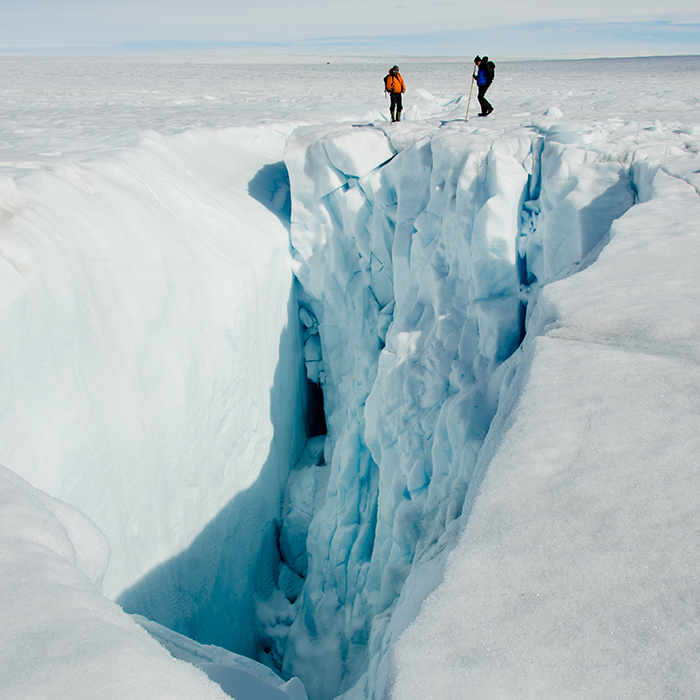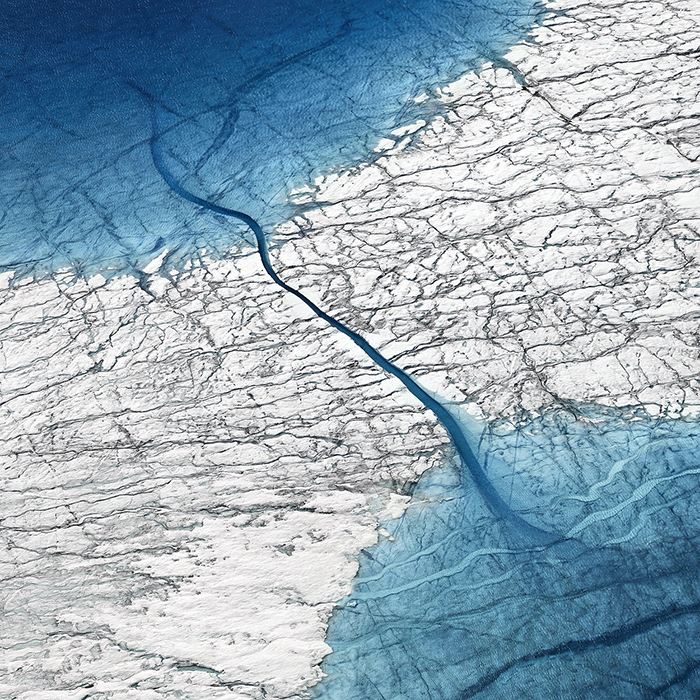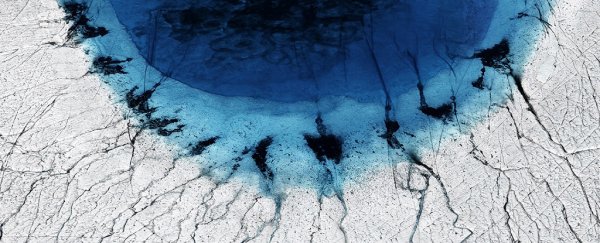We know that Greenland's ice sheets are melting as the world gets warmer, but new research shows this process is speeding up, as a chain reaction of fast-draining lakes compound the problem of diminishing ice cover.
These lakes, located on the surface of the ice, are caused by warmer temperatures. As they drain, they end up quickly transferring a lot of water and heat down to the base of the ice sheet. Faster flows lead to new fractures – which means other lakes can then drain at a more rapid rate.
This chain reaction of water drainage is capable of temporarily speeding up ice flow by as much as 400 percent, according to an international team of scientists. Once large cracks in the ice start to appear, the stability of the entire ice sheet is put under greater threat.
 Scientists inspect a fracture on the Greenland ice sheet. (Poul Christoffersen)
Scientists inspect a fracture on the Greenland ice sheet. (Poul Christoffersen)
"This ice sheet, which covers 1.7 million square kilometres [656,374 square miles], was relatively stable 25 years ago, but now loses one billion tonnes of ice every day," says one of the team, Poul Christoffersen from the University of Cambridge in the UK.
"This causes one millimetre [0.04 inches] of global sea level rise per year, a rate which is much faster than what was predicted only a few years ago."
Scientists already know plenty about these lakes and the effects they can have, but the new research suggests the damage they can do is more serious than was previously thought, because of the cascading effects happening under the ice.
These effects put the ice under increasing pressure, leading to tensile shocks and fractures. Solid ice far away from the edge of the sheet gets exposed to water and heat that it wouldn't otherwise come into contact with.
The lakes can exist for several weeks or months, but take just hours to drain. In this study, the researchers combined real-world observations spanning several years with a detailed 3D computer model to assess the potential impact of these lakes.
 Lakes and meltwater streams on the Greenland ice sheet. (Timo Lieber)
Lakes and meltwater streams on the Greenland ice sheet. (Timo Lieber)
In some cases, the chain reaction effect could speed up the drainage of other lakes as far as 80 kilometres (49.7 miles) away, the research found. One scenario was noted where 124 lakes drained over the course of just five days.
This network of "melt lakes" reaches as far as 135 kilometres (83.9 miles) inland, according to the study – a distance previously thought to be impossible. They also reach elevations as high as 2,000 metres (6,562 feet).
"Transfer of water and heat from surface to the bed can escalate extremely rapidly due to a chain reaction," says Christoffersen. "In one case we found all but one of 59 observed lakes drained in a single cascading event. Most of the melt lakes drain in this dynamic way."
All of which means the need to limit temperature rises and protect Greenland is more urgent than ever. As more of these massive ice sheets break off into the ocean, sea levels rise and coastal regions are put under severe threat.
Scientists are suggesting that summers in Greenland could become ice-free by the middle of this century, and that's a cautious estimate. And we're constantly learning more about how global warming is going to play out – on the ice sheets of Greenland and everywhere else in the world.
With so many variables to weigh up, the more detailed research we can get on what's happening right now, the better we can try and adapt.
"The transformation of forces within the ice sheet when lakes drain is sudden and dramatic," says one of the researchers, Marion Bougamont from the University of Cambridge in the UK.
"It all adds up when you look at the pathways of water underneath the ice."
The research has been published in Nature Communications.
